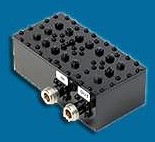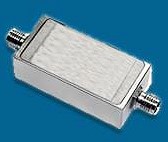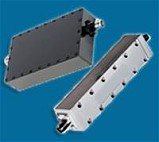Anatech Electronics Newsletter - February 2018 |

Press Release Archives: 2024 | 2023 | 2022 | 2021 |2020 2019 | 2018 | 2017 | 2016 | 2015 2014 | 2013 | 2012 | 2011 | 2010 2009 | 2008 | 2007 | 2006 | 2005 Content is copyright of company represented. Page format, custom text and images are RF Cafe copyright - do not distribute. 
Anatech Electronics, a manufacturer of RF and microwave filters, has published its February newsletter. In it, Sam Benzacar writes in "The Magic in Sprint's Magic Box" about how Sprint, which "has always been the Number Four wireless carrier," is surreptitiously catching up because of the widespread distribution of its personal cell extenders. Sam has a lot of insight into the wireless business through decades of keeping his finger on the pulse of the industry, and has written much about it. These monthly newsletters always provide good tidbits you likely won't find elsewhere. A Word from Sam Benzacar 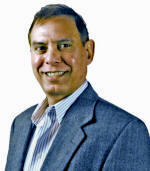 The Magic in Sprint's Magic Box By Sam Benzacar When Sprint introduced its Magic Box, it seemed on first inspection to be nothing special – another femto cell for the kitchen counter to compensate for poor indoor signal strength. Such things have been around for years from AT&T and Verizon. However, while the Magic Box does indeed perform this function, there's more to this shoebox-size module than meets the eye. As the company pointed out at launch, it's the first "all-wireless" small cell, which means that backhaul is not performed via an Ethernet connection but rather wirelessly through the wireless network.
If all this sounds familiar, you might remember that in a column some time ago I described how first Comcast and then later AT&T and Optimum (formerly Cablevision and now Altice) is somewhat surreptitiously using their high-end set-top boxes to expand their coverage. They can do this as your set-top box not only includes a cable modem but two Wi-Fi access points, a private one for you and a public one for everyone else. They never told customers about this, and I only found out by accident, after which I asked a Cablevision technician working in my neighborhood whether it was true, which he confirmed. So, when these carriers advertise that they have millions of Wi-Fi hotspots throughout the U. S., what they're really referring to is the ones they installed themselves outdoors as well as their customers. In the case of Sprint, the company makes a point of mentioning that one of the benefits of the Magic Box is increasing its LTE Plus network, which is a lot more up front but probably mostly a marketing benefit, as it claims that upload and download speeds can be increased by up to 200%. That said, being the suspicious type I can't help but think that once Sprint gets LTE-Advanced deployed on some or all its network, it will have the ability to deliver download data rates of at least 100 Mb/s and probably more. And when 5G gets here, it could be up to 700 Gb/s or more. These rates are more than adequate for streaming video, and that means by deploying its Magic Boxes now, it begins to create the beginnings of a Fixed Wireless Access broadband content delivery network. AT&T and Verizon have announced that their first implementation of 5G will be just such a thing. Sprint has always been the Number Four wireless carrier, but it has been feverishly increasing its capabilities to keep up with the other three, including three-carrier aggregation, outdoor small cells, 256 QAM, 4x4 MIMO and massive MIMO in its 2.5 GHz spectrum. Sprint also has 204 MHz of spectrum in the U.S. and more than 160 MHz in the top 100 markets, more than any other US wireless carrier. It was also the first company to trial Gigabit Class LTE in a network, which it accomplished last March in New Orleans. Personally, I think what Sprint is doing is a pretty novel way of significantly increasing quality of service and increasing data rates while potentially building out a fixed wireless network in the process at no additional cost. Time will tell how this shakes out and I'll be keeping an eye on it in the future.
What's News...
We Can Hear You Now
Latest Study Indicates Some Concern for RF Radiation
Apple Finally Adds Emergency Location
Check out Our Filter Products
Cavity Band Pass Filters LC Band Pass Filters Cavity Bandstop/Notch Filter About Anatech Electronics Anatech Electronics, Inc. (AEI) specializes in the design and manufacture of standard and custom RF and microwave filters and other passive components and subsystems employed in commercial, industrial, and aerospace and applications. Products are available from an operating frequency range of 10 kHz to 30 GHz and include cavity, ceramic, crystal, LC, and surface acoustic wave (SAW), as well as power combiners/dividers, duplexers and diplexers, directional couplers, terminations, attenuators, circulators, EMI filters, and lightning arrestors. The company's custom products and capabilities are available at www.anatechelectronics.com. Contact: Anatech Electronics, Inc. 70 Outwater Lane Garfield, NJ 07026 (973) 772-4242
Posted February 23, 2018 |
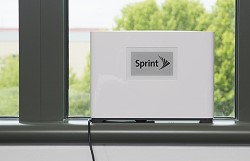 The Magic Box is,
according to Sprint, designed to massively increase its data coverage at minimal cost
as is essentially a plug-and-play device. The customer simply receives one, plugs it
into a power outlet, and it's on the air, which saves Sprint the time and cost associated
with permitting and other issues associated with deploying small cells. As its stated
ranges 30,000 ft.² indoors (!), this means that your Magic Box will not only cover your
home and your entire yard but potentially your neighbors' properties as well if they're
Sprint customers, as outdoor coverages claim to be more than 300 ft. In an apartment
building, for example, your single Magic Box could cover every Sprint customer in the
building.
The Magic Box is,
according to Sprint, designed to massively increase its data coverage at minimal cost
as is essentially a plug-and-play device. The customer simply receives one, plugs it
into a power outlet, and it's on the air, which saves Sprint the time and cost associated
with permitting and other issues associated with deploying small cells. As its stated
ranges 30,000 ft.² indoors (!), this means that your Magic Box will not only cover your
home and your entire yard but potentially your neighbors' properties as well if they're
Sprint customers, as outdoor coverages claim to be more than 300 ft. In an apartment
building, for example, your single Magic Box could cover every Sprint customer in the
building.  Verizon Wireless has once
again placed first in the latest network quality tests performed by RootMetrics in the
last six months of 2017. Verizon had the best network overall and also won for reliability,
speed, data connections, and calling, according to the RootMetrics report. For texting,
Verizon tied for first place with AT&T and Sprint and AT&T was second in most
categories with Sprint and T-Mobile bringing up the rear.
Verizon Wireless has once
again placed first in the latest network quality tests performed by RootMetrics in the
last six months of 2017. Verizon had the best network overall and also won for reliability,
speed, data connections, and calling, according to the RootMetrics report. For texting,
Verizon tied for first place with AT&T and Sprint and AT&T was second in most
categories with Sprint and T-Mobile bringing up the rear.  The National Toxicology Program (NTP) study into
the effects of exposure to RF radiation in rodents showed the presence of tumors in tissues
surrounding nerves in the hearts of male but not female rats or mice. The exposure levels
used in the studies were equal to and higher than the highest level permitted for local
tissue exposure in U.S. cellphone emissions. The report also noted statistically significant
increases in the number of rats and mice with tumors found in other organs at one or
more of the exposure levels studied, including the brain, prostate gland, pituitary gland,
adrenal gland, liver, and pancreas. Exposure levels ranged from 1.5 to 6 W/kg in rats
and 2.5 to 10 W/kg in mice, the low level for rats being equal to the highest level permitted
for mobile phone emissions. The animals were exposed for 10-min. on, 10-min. off increments
for more than nine hours each day.
The National Toxicology Program (NTP) study into
the effects of exposure to RF radiation in rodents showed the presence of tumors in tissues
surrounding nerves in the hearts of male but not female rats or mice. The exposure levels
used in the studies were equal to and higher than the highest level permitted for local
tissue exposure in U.S. cellphone emissions. The report also noted statistically significant
increases in the number of rats and mice with tumors found in other organs at one or
more of the exposure levels studied, including the brain, prostate gland, pituitary gland,
adrenal gland, liver, and pancreas. Exposure levels ranged from 1.5 to 6 W/kg in rats
and 2.5 to 10 W/kg in mice, the low level for rats being equal to the highest level permitted
for mobile phone emissions. The animals were exposed for 10-min. on, 10-min. off increments
for more than nine hours each day.  Apple will
finally support a better form of emergency location technology called Advanced Mobile
Location (AML) in iOS 11.3 (now in beta), having been heavily criticized for its omission.
Google added it to Android worldwide in 2016. AML is an open European Telecommunications
Standards Institute (ETSI) protocol. Unfortunately, few countries use AML--the UK, Austria,
Estonia, Lithuania, Belgium, Iceland, Finland, Ireland and New Zealand--although others
are testing it. AML automatically sends a user's location to emergency services via SMS
when making an emergency call by activating GPS and Wi-Fi if they're not already on.
Caller location accuracy is said to be improved up to 4,000 times compared to the cell-site
triangulation with 85% of calls being in a radius of less than 50 m. It remains to be
seen how accurate AML is vertically, the axis the most difficult to accurately determine.
Apple will
finally support a better form of emergency location technology called Advanced Mobile
Location (AML) in iOS 11.3 (now in beta), having been heavily criticized for its omission.
Google added it to Android worldwide in 2016. AML is an open European Telecommunications
Standards Institute (ETSI) protocol. Unfortunately, few countries use AML--the UK, Austria,
Estonia, Lithuania, Belgium, Iceland, Finland, Ireland and New Zealand--although others
are testing it. AML automatically sends a user's location to emergency services via SMS
when making an emergency call by activating GPS and Wi-Fi if they're not already on.
Caller location accuracy is said to be improved up to 4,000 times compared to the cell-site
triangulation with 85% of calls being in a radius of less than 50 m. It remains to be
seen how accurate AML is vertically, the axis the most difficult to accurately determine.
